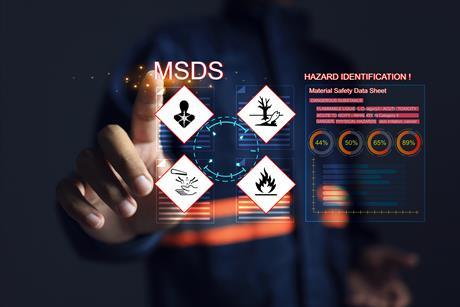CLP Basics
What is CLP?
CLP is a regulatory framework for the classification and labelling of substances and mixtures in the EU. It is based on an international agreement known as the Globally Harmonised System (GHS). The CLP Regulation progressively replaced the EU’s Dangerous Substances and Dangerous Preparations Directives which were repealed on 1 June 2015.
The CLP Regulation requires chemicals to be classified for their hazards and their packaging labelled accordingly. Under CLP, labels are very different to those under the previous regulatory framework. CLP has been phased in gradually over a seven-year transitional period, so that the burden on business was reduced. Consequently, labels on the packaging of hazardous substances and mixtures have been changing since 2010.
The CLP Regulation also has some important additional notification requirements which may affect you if you import or manufacture and supply to EU customers.
Scope
CLP has broadly the same scope as the old scheme. It deals with the majority of chemicals which are put on the industrial, professional and consumer markets in the EU, including those supplied free of charge and in very small quantities. However, a few chemical product types are exempt – for example, finished cosmetics and medicines.
Changes under CLP
Depending on their role in the supply chain, companies’ main obligations under CLP relate to classification, labelling and notification to the C&L Inventory and poison centres. Classification is the process of identifying and comparing intrinsic properties with agreed criteria; labelling is the communication of that information on packaging.
Training
If you need to understand how the CLP Regulation including the new poison centre notifications affects your products and what you must do to comply, come along to one of our training days. We regularly run workshops which will provide an introduction to both REACH and CLP including poison centres – check out the training section of the website to find out more. Alternatively we can deliver bespoke training tailored to deliver just what you and your colleagues need to know about REACH and CLP in your own workplace or online via a webinar.
Classification and labelling under CLP
The CLP Regulation has made major changes to the way substances and mixtures are classified and labelled in the EU. One of the most striking changes is the introduction of three new pictograms:
- the ‘exclamation mark’, which indicates lower acute toxicity and irritation effects;
- the ‘silhouette’ (sometimes referred to as the ‘exploding man’), which indicates serious, chronic health effects; and
- the ‘gas cylinder’ for gases under pressure.
Click on the CLP pictograms meaning images to find out more about what these pictograms mean.
In the pre-CLP regime, there were fifteen danger classes; CLP comprises some twenty-nine hazard classes divided into three areas: physical, health and environmental hazards. Unlike previous systems, CLP’s hazard classes are sub-divided into categories with different criteria for classification.
For the physical hazards, CLP sees a move from five to sixteen hazard classes, introducing new hazard classes such as ‘corrosive to metals’. In doing so, it brings the classification for supply in line with the requirements for the transport of dangerous goods.
For health effects, a chemical previously classified as ‘harmful’ could be classified under CLP according to its acute toxicity, aspiration toxicity, specific target organ toxicity – single exposure (‘STOT SE’), or specific target organ toxicity – repeated exposure (‘STOT RE).
CLP Pictograms Meaning
REACHReady Guide
What Does CLP Mean for Retailers?
Any retailer who sells paint, nail varnish remover, bleach or washing powder will have seen the orange and black warning symbols which adorn the packaging of these chemically based products.
Notification to the C&L Inventory
The obligation to notify to the C&L Inventory applies to manufacturers and importers of substances placed on the EU market which are either:
- subject to registration under REACH, or
- hazardous and imported on its own, or
- imported in a mixture in concentrations leading to the classification of that mixture under CLP.
The notification must be submitted within a month of first placing the substance on the EU market.
Companies are also required to maintain their notifications and submit updates where new information leads to a change in classification. Notifiers and REACH registrants are also required to make every effort to come to an agreed classification where more than one has been submitted.
REACHReady’s Gold subscribers can find more detailed advice on how to manage their obligations on the CLP pages of our website. If you aren’t a Gold subscriber, contact us to find out more.
Dealing with mixtures under CLP
If you import or formulate and supply mixtures you must classify and, where required, label them to CLP before placing them on the market. Are you about to place on the market a new product? Or perhaps you have a new formulation to supply? If so, the first task will be to gather and assess information in order to classify your mixtures. Once classified to CLP, you may need to design your labels, with input of course from your marketing department!
All of these tasks require time and a budget. If you have the expertise and resources to do the work in-house you can find out more about how to classify and label at our next CLP workshop , visit our events page to find out more. Our Gold subscribers can also read our CLP guidance on the password-protected part of the REACHReady website to help them get started.
Alternatively, you may decide to outsource the work - why not let us to put you in touch with some suitable Approved Service Providers though our Matchmaker service.
Poison Centres
In 2017, a new Annex VIII was added to the CLP Regulation, implementing harmonised information requirements for notifications to poison centres. The main principle is that importers and downstream users placing hazardous chemical mixtures on the market need to submit information to the appointed body of the Member States where the mixtures is placed on the market. This information is then used for emergency health responses.
Become a REACHReady member - sign up now. Call us on +44 (0) 20 7901 1444 for more information





